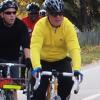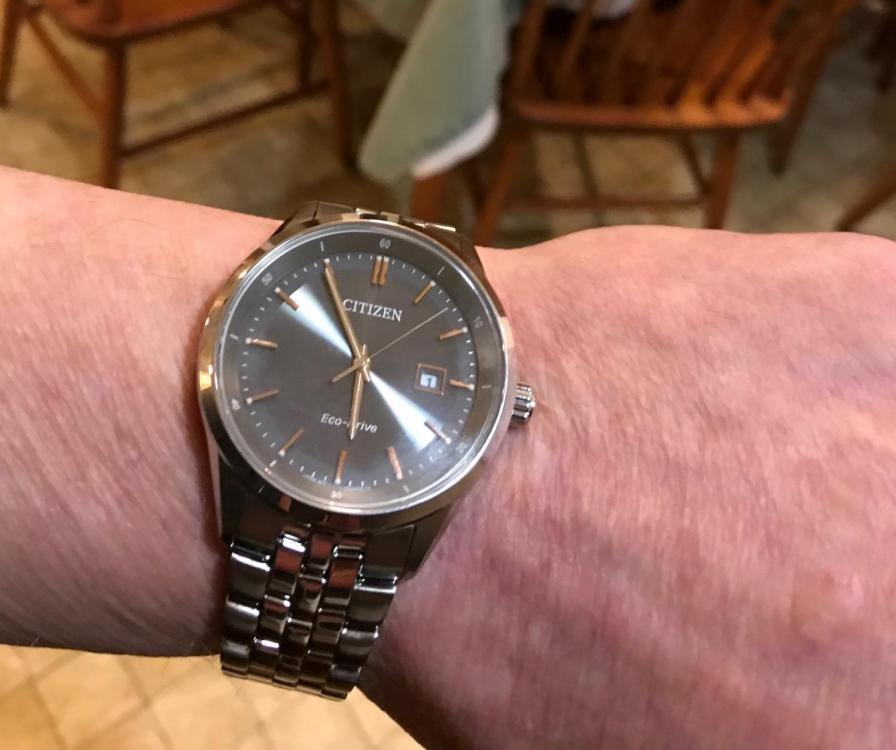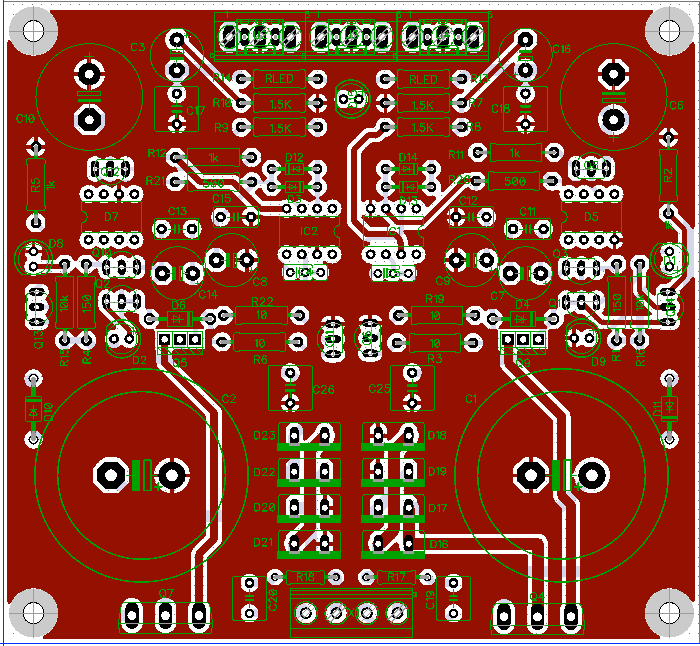-
Posts
8,555 -
Joined
-
Last visited
-
Days Won
7
Content Type
Profiles
Forums
Events
Everything posted by Pars
-
50VA would be fine, though I usually use the 100VA Antek transformers. This is team overkill, after all EDIT: I also ran the sim I have with 35VAC input, and used 4K/2K for R7/R8 for 30V out. The voltages across the 47uf caps was 9V for the first one and 10V for the second. The 10uf had ~16V on it. This is a sim, which may not match real life, but I would think it would be close to actual.
-
There is a dynamic CFA2/3 as well. Now for something completely different... Sent from my iPhone using Tapatalk
-
You should be good. I’ll have to look at the one in my DynaFET as it is +/-30V. I think 35V is as high as you can get for the 47uf. I’ll take a look in a sim and see what voltage these are on a 30V supply. Sent from my iPhone using Tapatalk
-
They are shown as B stock... not sure if that means much for these or not?
-
Redco.com Sent from my iPhone using Tapatalk
-
Got one put together, but having a strange problem with it. The output voltages seem fine (and stable). However on startup, D1 flashes and then goes dim. D9 is brighter than either of the negative channel LEDs (D2 or D8). The V drop across the 150R are 1.51V for R1 and 1.62V for R2. Other voltages appear to be approximately the same. I'll have to remeasure the drops across the LEDs. The zeners appear to be similar (~8.9V). Any initial thoughts? Components appear to be in the proper spots. Since I was in a rush to get these made (seeed 30% off), I also hadn't noticed some placement changes vs. the layouts from Kevin, particularly the LED placement is for D1 and D9 were reversed from Kevin's. I have made some changes in my diptrace files since I had these boards run to correct for that and label placements, etc. EDIT: Found/fixed. Somehow I had put a BC559 in in place of an MPSA92 (Q3). Must have gotten mixed in my bag of MPSA92s somehow and I didn't read the labels when building it. Works just fine now (DOH!) EDIT2: This one is for Diptrace users. When I went back into the schematic for this, after making some changes for the LED placement, and to add a pair of 220uf with 5mm LS in addition to the 7.5mm LS caps that were there (Silmics?), I found that the V- net had connected itself to the AGND net (no V- net present). Fortunately, this was not present in the board file I had run. How does this happen? And it wasn't easy/straight forward to fix.
-
I got a number of hits searching on “pcb busbar”, including this one on stackexchange: https://electronics.stackexchange.com/questions/59735/creating-a-high-current-bus-on-a-pcb (Sorry, Hand-typed, hopefully works. Also, I’ve been out of town and didn’t take a close look at your pics). Sent from my iPhone using Tapatalk
-
Happy belated birthday!
-
Maybe just post them to the thread... Still not sure what all the interest is in this, but I confess to not having built one. The SS Dynalo is a better amp from what I understand. Or the CFP2... Sent from my iPhone using Tapatalk
-
Yes, dropping R14/R29 drops the bias level. Sorry for any confusion in past posts.
-
You should be OK, assuming you are using the right adapters (don't use the SA1349/SC33xx adapters!). There aren't really any voltages present there that would damage the JFETs, unless the Gate is wired incorrectly.
-
I probably got it backwards as from what I recall, the 402R biased it hotter than the 422R did. IThe 15mA or so came after it was running for at least 30 mins, more like an hour. Putting the heatsinks on should drop it a bit (couldn't measure, but based on overall current draw of the amp). EDIT: just played around in a spice model, and lowering the LED resistors (R1, R3) biases things hotter.
-
Yeah, I also like that one a lot. Not quite up to your guys levels, but my wife got me this for Christmas...
-
Happy Merry Birthday!
-
Do you mean the ACN (Analog Crossover Network)? That was the only thing even close that I found there...
-
2SJ109BLs are a tough ask (for genuine ones). You could use singles (2SJ74 or Linear equivalents), or the Linear duals with some lead manipulation. Maybe: https://www.diyaudio.com/forums/swap-meet/320192-toshiba-2sj109bl.html This guy... maybe: https://www.ebay.com/itm/Matched-quad-of-2SK389BL-2SJ109BL-100-original-and-genuine-Toshiba-015-idss9-9/282424664232?epid=593519663&hash=item41c1d260a8:g:2-oAAOSwuxFYtUc~:rk:3:pf:1&frcectupt=true
-
Happy Birthday Ken!!!
-
Tangent has an article on his site ( http:// tangentsoft.net/audio ) on building a load box. He used 33 and 330 ohms, but did mention 120 as a third option. Sent from my iPhone using Tapatalk
-
What they said regarding community participation. As for adding a headphone jack, you could simply wire a pair of RCA plugs to a jack (1/4” TRS). The L+ would go to the Tip contact of the jack, the R+ to the Ring contact, and the Gnd to the Sleeve. If you have room on the faceplate for the jack, wiring it internally would be a nice plus. Not sure how good it would sound, so going the cable route would probably be advised until you determine that. I would also measure the DC offset (L+ to Gnd, R+ to Gnd) before plugging any phones in. 10% distortion at 1000Hz? That is pretty awful if accurate. Sent from my iPhone using Tapatalk
-
It appears that the 750R / 511R voltage divider feeding the opamp is what sets the gain, but I didn’t find a formula for calculating the output voltage. One guy dropped his to 19V by paralleling a 2k resistor with the 511R. https://www.diyaudio.com/forums/headphone-systems/109618-krell-ksa5-10.html#post5190186 Sent from my iPhone using Tapatalk
-
Why? 1 to 2 volts is a pretty minimal change. Sent from my iPhone using Tapatalk
-
Yes Sent from my iPhone using Tapatalk
-
R52/R53 and R56/R57 (200K/10K) dynahibalbjt.pdf
-
These are the boards; I had seeed run 10 of them. Guess I'll have to build one up and see if it works... The board is a bit larger at 116 x 107mm, so new build only. Mounting holes are inset 5mm (x,y).





